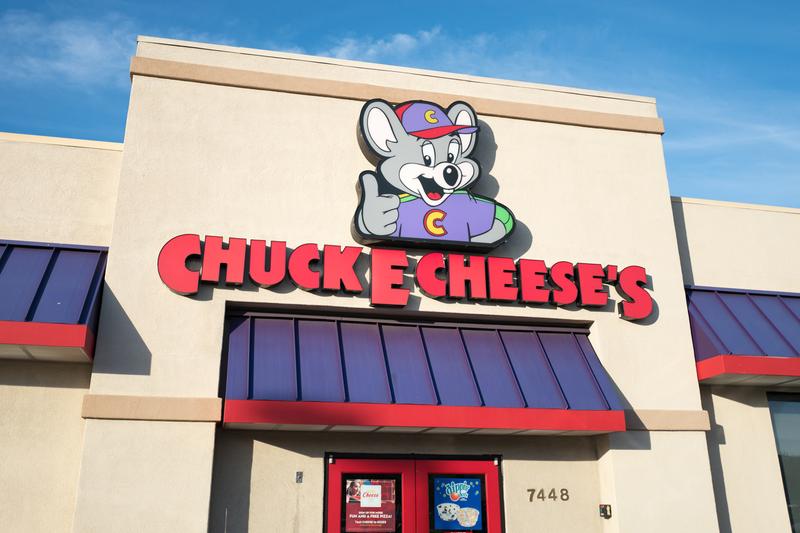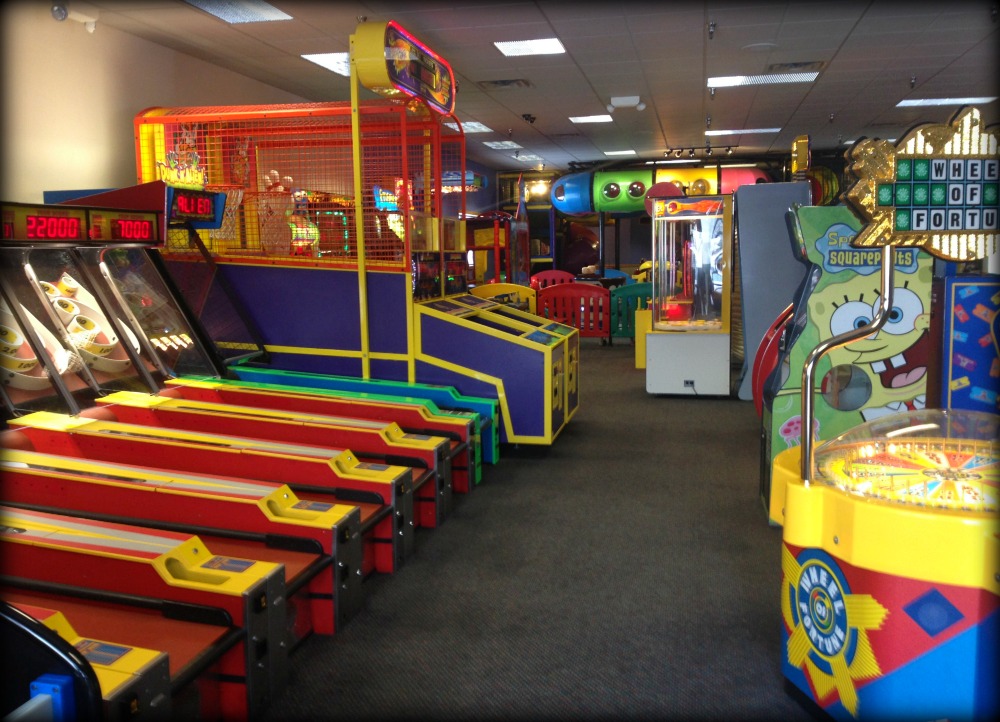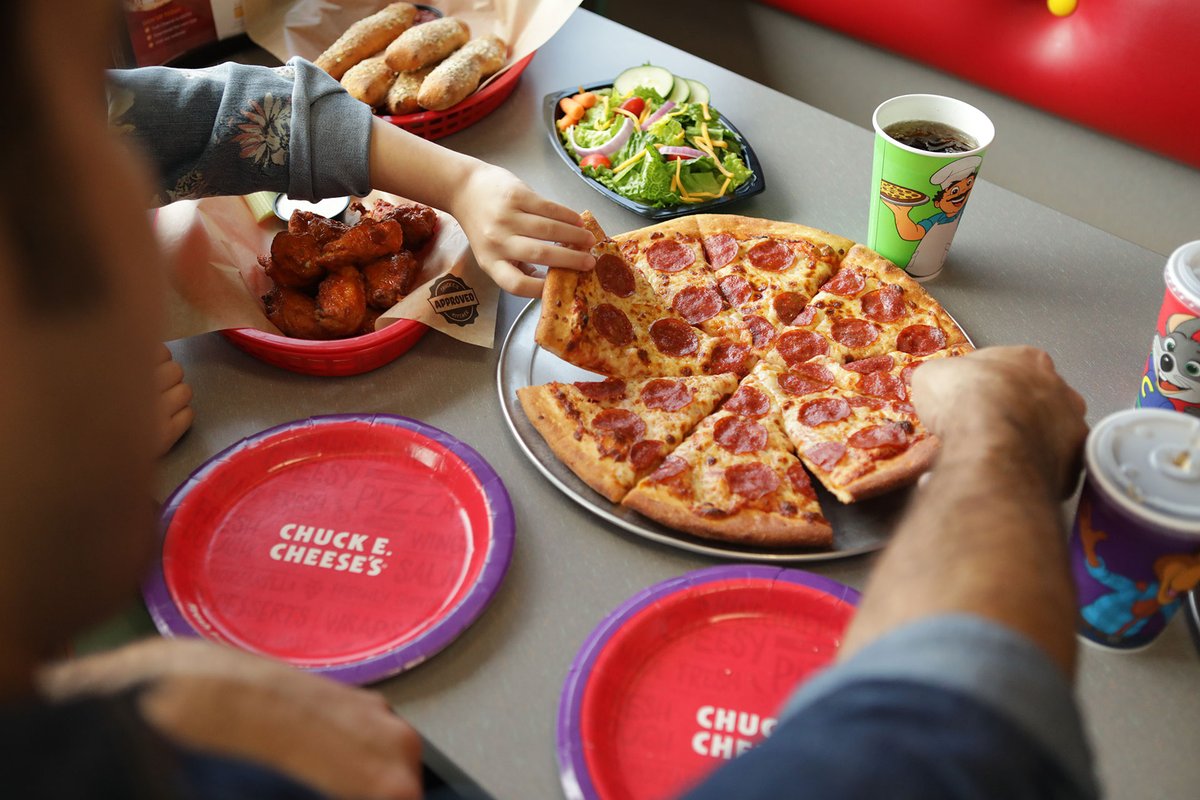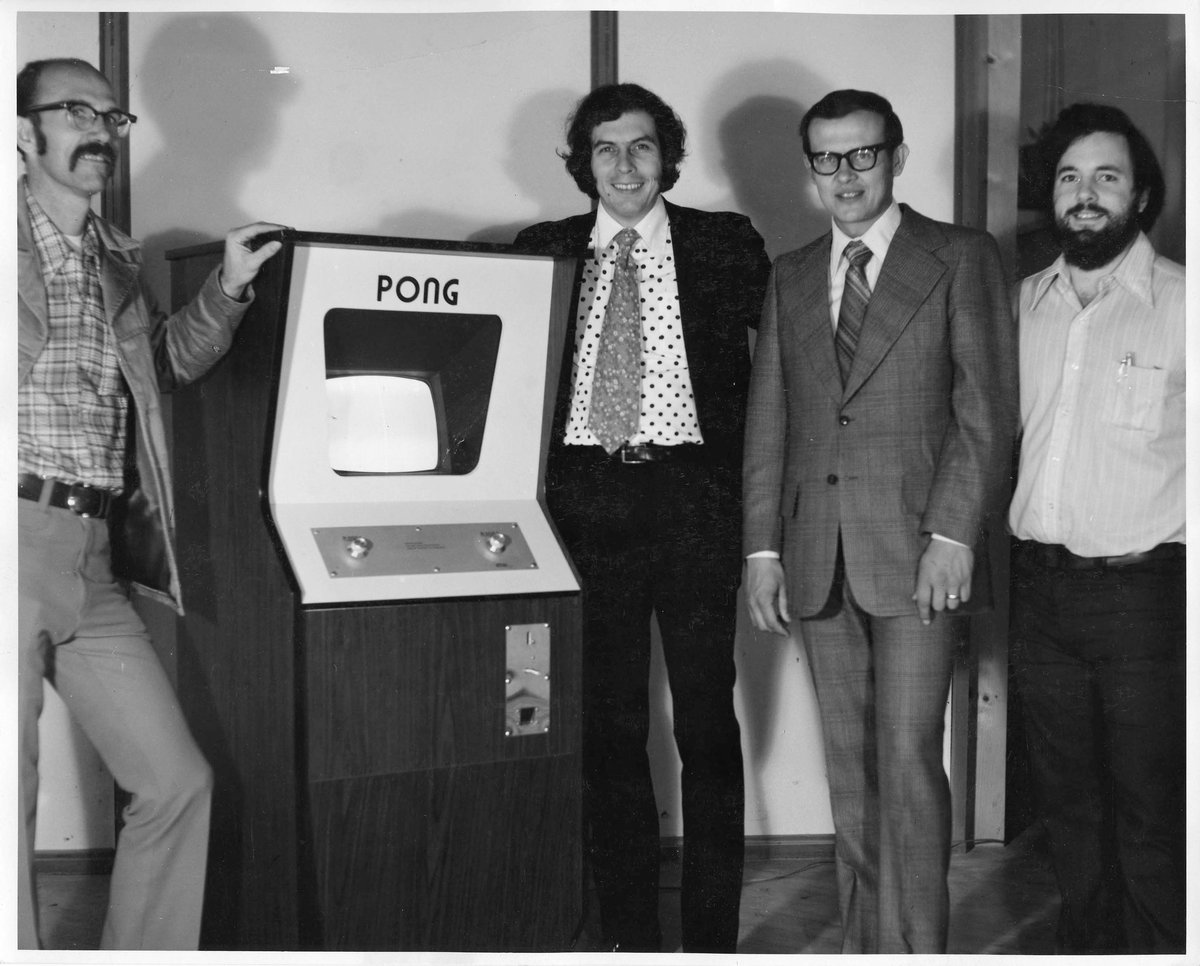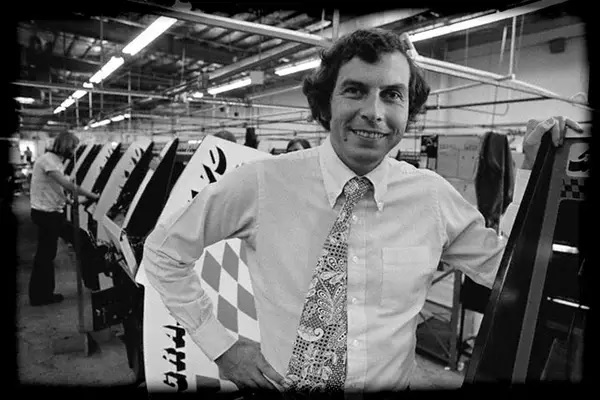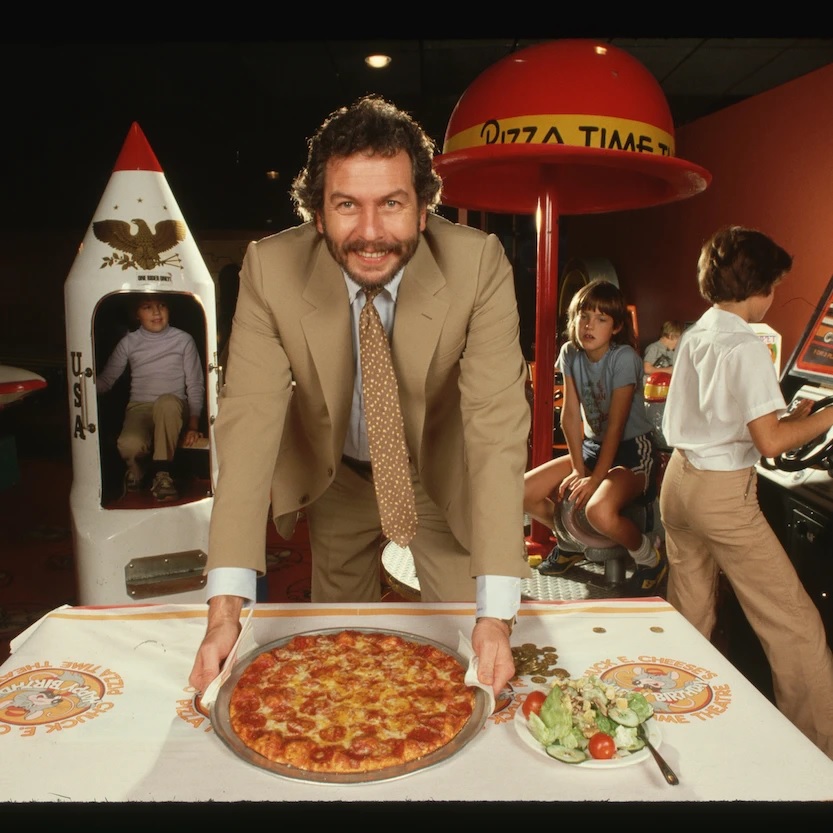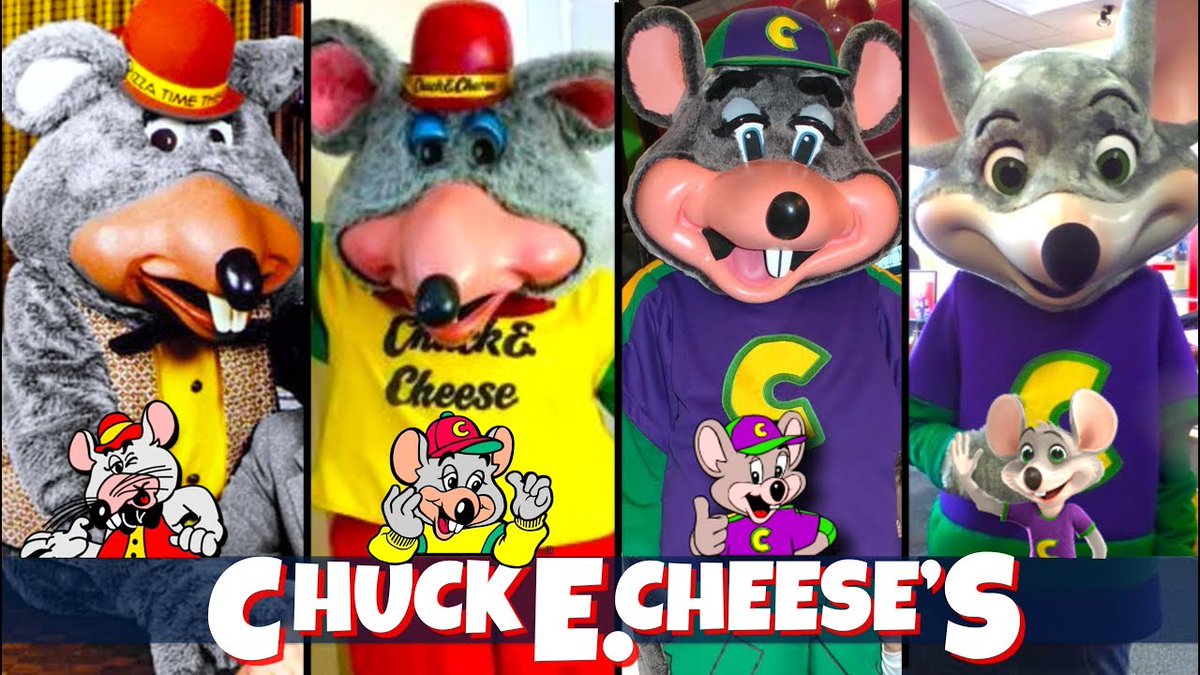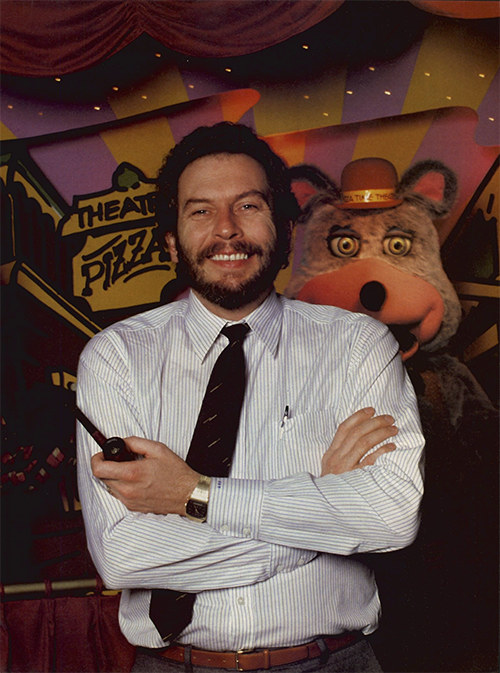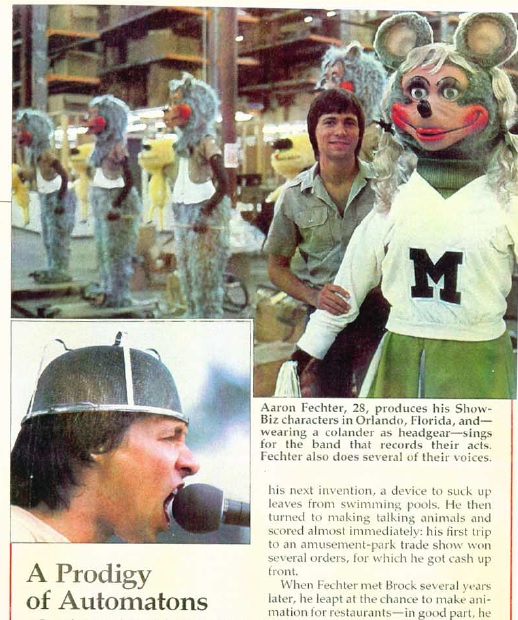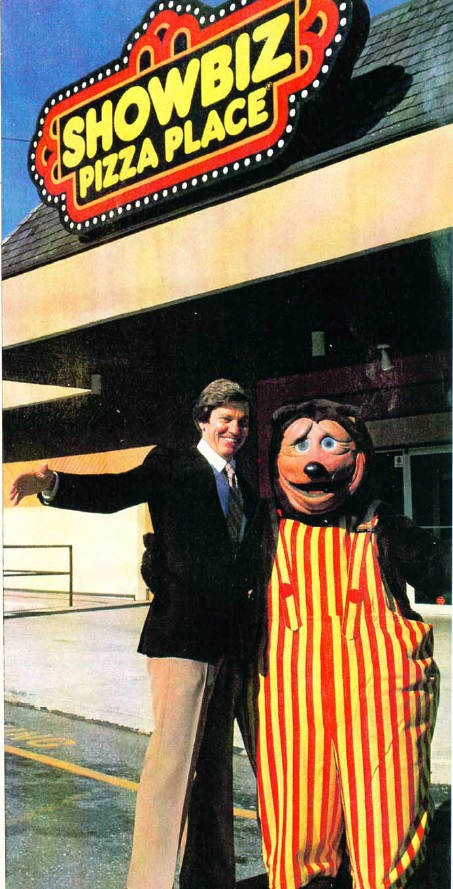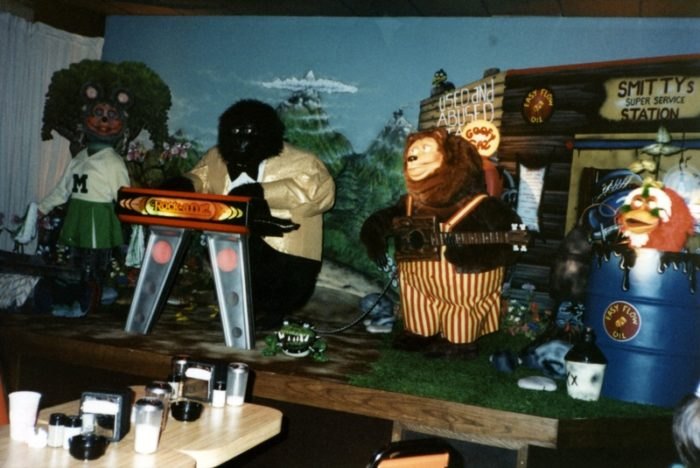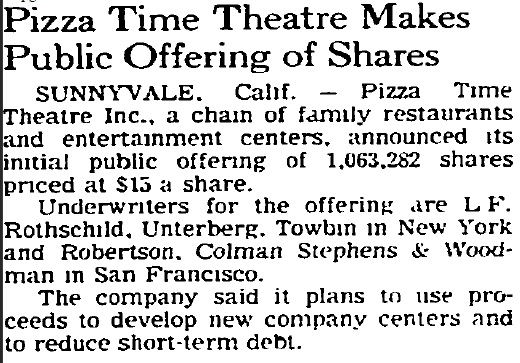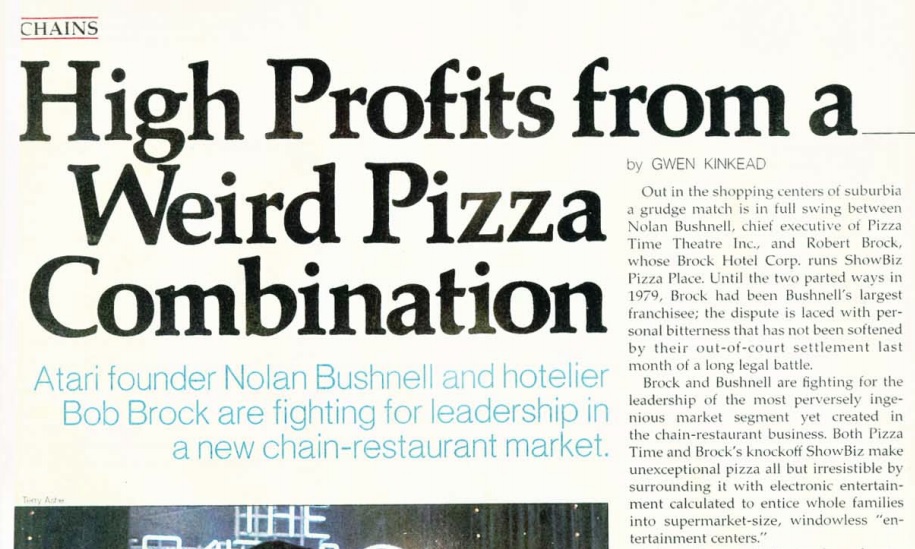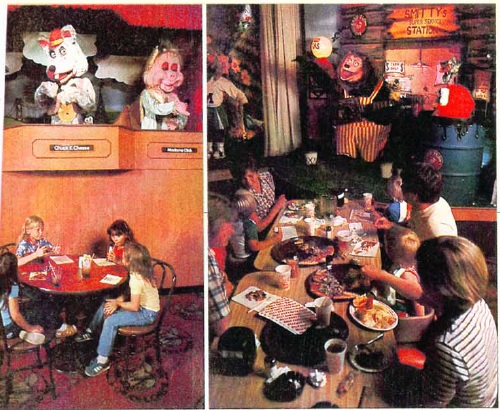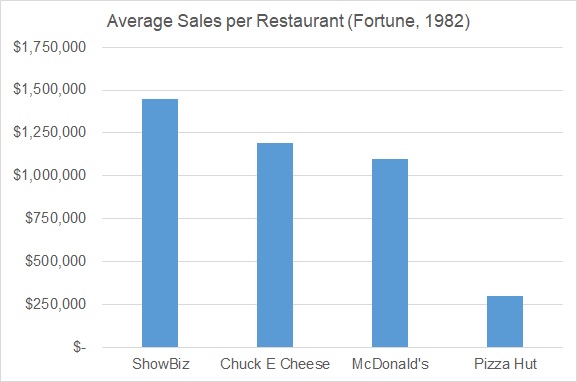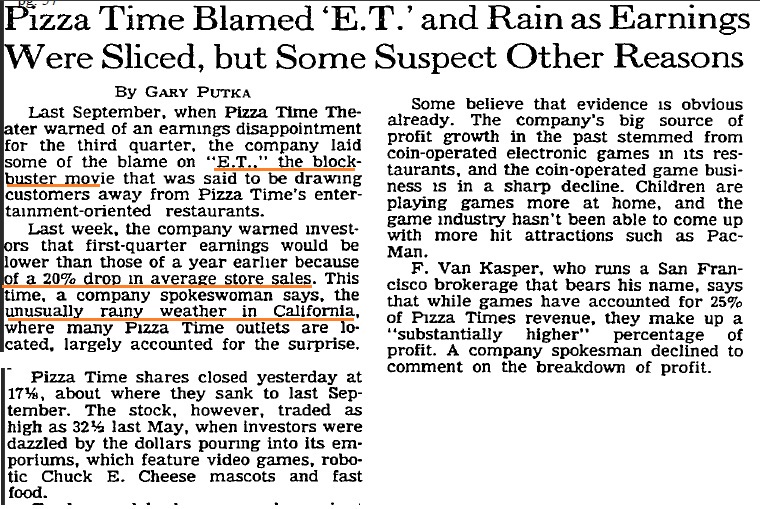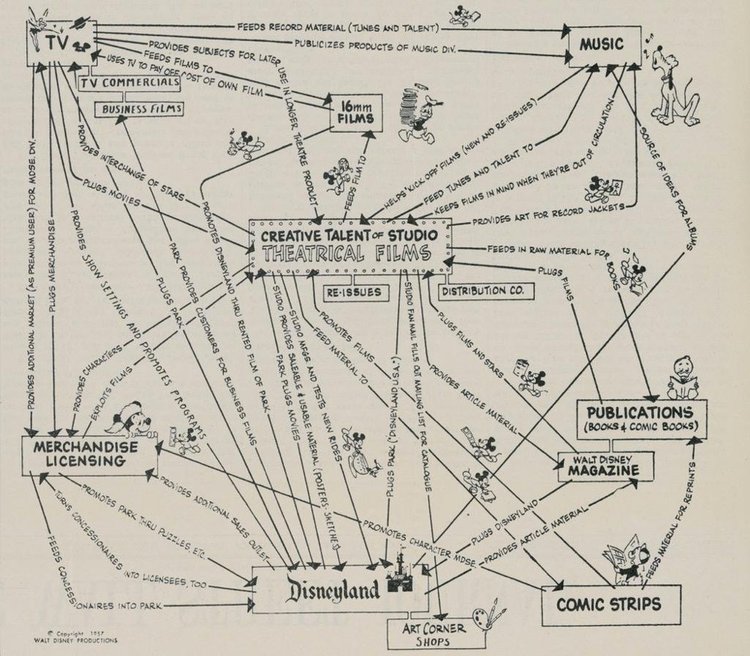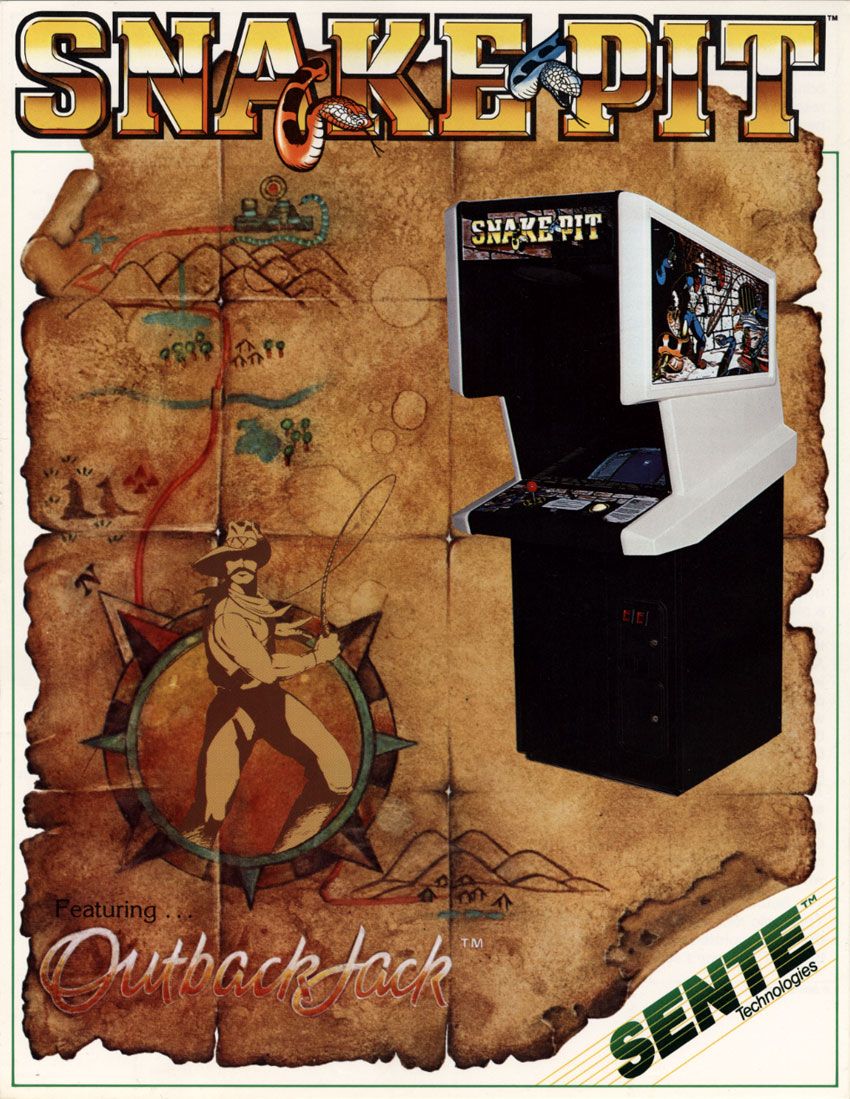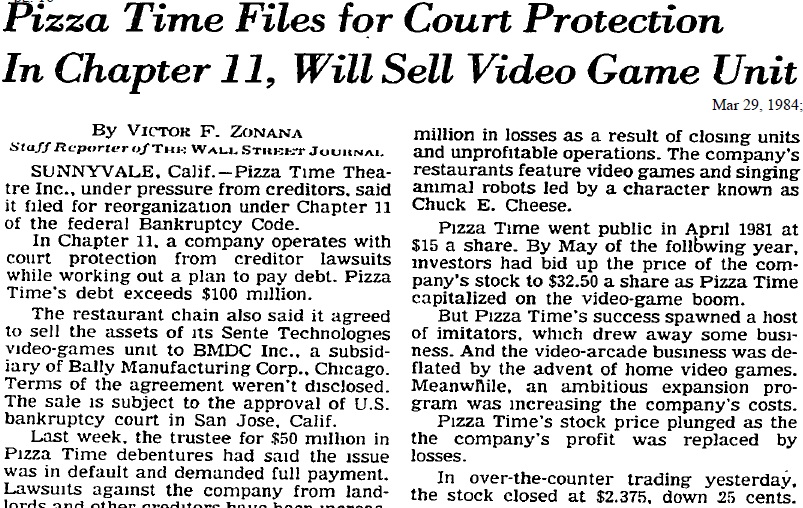The Rise and Fall - And Rise Again - of Chuck E Cheese.
The kids restaurant and entertainment chain recently filed for bankruptcy - for the second time in its history.
This origin story includes an iconic founder, video games, home robots, and painful business lessons.
The kids restaurant and entertainment chain recently filed for bankruptcy - for the second time in its history.
This origin story includes an iconic founder, video games, home robots, and painful business lessons.
In 1972, Nolan Bushnell founded the legendary game company Atari. Initial games like Pong were popular as coin-operated arcades. Bushnell noticed how profitable these machines were for his customers and he too "wanted to operate and take in those quarters."
He sketched out a restaurant concept. What cheap food do kids love that takes a while to prepare (during which time the kids can sink quarters into games)?
Born was "Pizza Time"
Born was "Pizza Time"
Bushnell idolized Walt Disney and he envisioned the restaurants as mini amusement parks with games, food, and entertainment.
He had previously worked at an amusement park and wanted robot animals - animatronics - to provide entertainment (cheaper than human entertainers)
He had previously worked at an amusement park and wanted robot animals - animatronics - to provide entertainment (cheaper than human entertainers)
He buys a costume to be animated as the mascot. He mistakenly picks a rat costume, thinking it was a kind of Wile E Coyote.
"The name has to be happy."
"Chuck. E. Cheese. It's a three smile name"
"The name has to be happy."
"Chuck. E. Cheese. It's a three smile name"
By the way, the mascot's full name is Charles Entertainment Cheese. What a legend.
Chuck has changed a bit over the decades. From the looks of it he initially ran a loan sharking operation in the back of the restaurant before benjamin-buttoning into a Fortnite character
Chuck has changed a bit over the decades. From the looks of it he initially ran a loan sharking operation in the back of the restaurant before benjamin-buttoning into a Fortnite character
"I wanted to have entertainment. Pizza parlors had the big Wurlitzer organ. There was a lot of visuals"
"The Chuck E Cheese players. You gotta admit they were really ugly. And they scared little kids"
So that was the original concept.
"The Chuck E Cheese players. You gotta admit they were really ugly. And they scared little kids"
So that was the original concept.
In 1976, he sold Atari to Warner Communications for $28 million. Two years later he was forced out over disagreements in strategy. Building another game company was off the table due to a seven year non-compete.
At this point there was one Pizza Time restaurant. Warner had no interest in the idea and they sold Bushnell the restaurant and rights for $500,000. He was back in business.
Scaling the restaurant requires a lot of capital. Bushnell invests millions of his own and raises VC money.
He also signs a franchise deal with a Dallas-based businessman called Robert Brock, the largest franchisee of Holiday Inns.
He also signs a franchise deal with a Dallas-based businessman called Robert Brock, the largest franchisee of Holiday Inns.
But Brock hears about another engineer creating animal robots, Aaron Fechter in Florida (that's Fechter wearing a colander on his head).
Brock likes those animals better and suddenly wants out of the franchise contract.
Brock likes those animals better and suddenly wants out of the franchise contract.
"The day he was going to open, he buys some animals from a guy in Florida. Really pissed me off."
Bushnell sues him. They settle: Brock will pay a 6% royalty, up to $200mm. He'll run his restaurant chain as Showbiz Pizza Palace with Fechter's robot band
Bushnell sues him. They settle: Brock will pay a 6% royalty, up to $200mm. He'll run his restaurant chain as Showbiz Pizza Palace with Fechter's robot band
This is Brock with the animal "Billy Bob Brockali" - "a large bear with an ironic smile" (I promise I'm not making this up).
Fechter even becomes a partner in his company. His animal band is called the Rock-afire-Explosion.
Fechter even becomes a partner in his company. His animal band is called the Rock-afire-Explosion.
Bushnell then takes Pizza Time public. VCs previously invested at $3.75 and $5.25 a share. The IPO is priced at $15 a share and the stock would later hit a high of $32.50.
But now we have two nearly identical chains aggressively rolling out hundreds of restaurants nationwide.
But now we have two nearly identical chains aggressively rolling out hundreds of restaurants nationwide.
Fortune called it the "the most perversely ingenious market segment in chain restaurants"
"Unexceptional pizza made irresistible by electronic entertainment in supermarket-size windowless centers"
Inc. called it "Las Vegas casinos for kids"
"Unexceptional pizza made irresistible by electronic entertainment in supermarket-size windowless centers"
Inc. called it "Las Vegas casinos for kids"
The large restaurants had much higher sales than their competitors. And they had the arcade games which contributed 25% of sales and an estimated 40-50% of profits.
"Chuck E Cheese was designed to give me 40% EBITDA at a store level"
"We had cheap pizza. There were those who said it was crappy pizza. But we never listened to them"
Also: no table service and high margin games. A recipe for high profits.
"We had cheap pizza. There were those who said it was crappy pizza. But we never listened to them"
Also: no table service and high margin games. A recipe for high profits.
But 1982 would be the top for the concept. Pizza Time stock had doubled since IPO. Brock Hotel Corp with its ShowBiz unit was up threefold over two years.
The two chains were opening a new store every five days and aimed for 1,000 units. Each.
The two chains were opening a new store every five days and aimed for 1,000 units. Each.
Said a skeptical analyst: "These places don't have the best videogame arcades or the best restaurants. Anyone can replicate the idea. What will happen when the novelty wear off?"
Bushnell was not that interested in the daily grind of running a restaurant. The restaurant was a distribution channel for games.
His analogy was pre-1950's Hollywood, when major studies produced movies and controlled theaters. Without his own games he was merely a middleman.
His analogy was pre-1950's Hollywood, when major studies produced movies and controlled theaters. Without his own games he was merely a middleman.
"It was such a good business that it ultimately was broken up by the Justice Department. I felt that the analogy was such a powerful one, of having unique, exclusive products in a retail establishment, that it was just an overwhelming profit potential."
And of course Bushnell's strength and passion was creativity and bringing new ideas to life. Not the daily operations of the restaurant business.
"Everything was going along swimmingly. I have 5 year ADD. I love what I'm doing for 5 years. Until things are really working well."
"Everything was going along swimmingly. I have 5 year ADD. I love what I'm doing for 5 years. Until things are really working well."
Bushnell goes back into creative mode and sets up Catalyst Technologies, an early incubator.
Catalyst would seed and support consumer electronics companies including some very innovative stuff - digital shopping, digital navigation for cars, and Androbot, a home robot company.
Catalyst would seed and support consumer electronics companies including some very innovative stuff - digital shopping, digital navigation for cars, and Androbot, a home robot company.
"I really love robots."
"Can anyone really envision the year 2000 without robots running around the home?"
Unfortunately, while very innovative the early robots had limited functionality. "As soon as we get an arm on him, vacuuming will be easy."
"Can anyone really envision the year 2000 without robots running around the home?"
Unfortunately, while very innovative the early robots had limited functionality. "As soon as we get an arm on him, vacuuming will be easy."
Also, in 1983 his non-compete expired. He immediately acquired a game company called Videa which he turned into the Sente video game division.
"PizzaTime will be back with a vengeance. We have a division called Sente. Sente is the one move in the game of Go that beats Atari."
"PizzaTime will be back with a vengeance. We have a division called Sente. Sente is the one move in the game of Go that beats Atari."
In the meantime, video games are moving from arcade to home consoles and the excitement is wearing off.
Sales at Pizza Time are starting to decline. The company blames bad weather and the release of the popular ET movie. The stock starts to slide.
Sales at Pizza Time are starting to decline. The company blames bad weather and the release of the popular ET movie. The stock starts to slide.
The company was also dealing with imitators. Even Warner, who had sold the first Pizza Time location, were putting $40 million in a restaurant & game concept called the Gadget with Looney Tunes animatronics (kind of a shame it failed).
Pizza Time now has the Chuck E Cheese restaurants, Sente gaming, a single bar concept called Zapp's, and Kadabrascope, an animation company run by an ex-Disney animator.
It reminds me of the famous Disney chart with the different pieces supporting each other.
It reminds me of the famous Disney chart with the different pieces supporting each other.
Unfortunately, the ventures all required capital. And the Chuck E Cheese cash cow was in trouble.
Bushnell worked with Merrill on an Androbot IPO, valuing it at $90 million. The robot was still a product for enthusiasts but Merrill was eager to break into the high tech.
Bushnell worked with Merrill on an Androbot IPO, valuing it at $90 million. The robot was still a product for enthusiasts but Merrill was eager to break into the high tech.
Said a venture capitalist: "I think taking a company public in the consumer electronics industry that has no revenues and no product is crazy."
In any event, in the summer of 1983 gaming and consumer electronics stocks get hammered in the "video game crash."
Atari lost $536 million after disappointing sales and famously dumped game cartridges in New Mexico landfills.
And the Androbot offering was pulled.
Atari lost $536 million after disappointing sales and famously dumped game cartridges in New Mexico landfills.
And the Androbot offering was pulled.
And time was running out for Pizza Time.
"I was not planning to spend a significant amount of time at Pizza Time," Bushnell recalls. "I thought it was pretty much on automatic pilot. Then right after the middle of the year, it was very obvious that things were wildly wrong."
"I was not planning to spend a significant amount of time at Pizza Time," Bushnell recalls. "I thought it was pretty much on automatic pilot. Then right after the middle of the year, it was very obvious that things were wildly wrong."
He hoped Sente's new Snakepit game and a Chuck E Cheese Christmas cartoon would boost sales. But neither made much of a difference.
"When there wasn't the recovery, I said, 'OK, maybe I don't have what it takes in this particular situation.' And also other fish had to be fried."
"When there wasn't the recovery, I said, 'OK, maybe I don't have what it takes in this particular situation.' And also other fish had to be fried."
But wait a minute - how come by 2020 there were more than 700 restaurants packed with pizza, games, and entertainment?
First, Brock bought the company out of bankruptcy. But he was a hotel guy, couldn't figure out how to fix the business and would resign a few years later.
The company then hired a seasoned restaurant executive named Richard Frank to manage the turnaround.
The company then hired a seasoned restaurant executive named Richard Frank to manage the turnaround.
“We weren’t paying most of our rent, we weren’t paying our debt. We were focused on making our payroll and paying our vendors"
He closed the 100 least profitable stores, renegotiated and reduced the debt from $110 to $30 million, then raised additional equity.
He closed the 100 least profitable stores, renegotiated and reduced the debt from $110 to $30 million, then raised additional equity.
“Even though the stores were really run down, I still saw a bunch of little kids running around with smiles on their faces. They still loved the concept. They still loved Chuck E. Cheese, loved the characters and animation. I thought, ‘There has to be something to this.’"
It's the Charlie Munger turnaround concept:
"I call it the cancer surgery formula: they look at this mess and figure out if there’s anything sound left that can live on its own if they cut away everything else."
"I call it the cancer surgery formula: they look at this mess and figure out if there’s anything sound left that can live on its own if they cut away everything else."
Frank had to fix the topline. "Same-store sales had been declining for 6 or 7 years. You can restructure the debt, but if you don’t get the sales turned around, you’ll be right back at bankruptcy.”
He surveyed customers and visited stores to identify the issues: food quality, loud restaurants, lack of service. Loved by kids but hated by parents. Some spots were hangouts for teenagers in the afternoon, playing the arcade games and smoking.
The fix was surprisingly straightforward: ban unaccompanied minors to get rid of the teenagers. Mix video games with more games of skill like whack-a-mole and ball tosses. Improve food quality, expand the menu. Add windows and more lighting. And fix the service quality.
"We had to make sure that kids still loved to come to Chuck E. Cheese but do it in a manner that was more acceptable to parents”
It was a crucial shift, leaving behind the emphasis on video games and surfacing the core of a fun kids hangout, especially for birthday parties.
It was a crucial shift, leaving behind the emphasis on video games and surfacing the core of a fun kids hangout, especially for birthday parties.
TV ads get the word out and by 1987 same store sales are tracking positive. The chain was spun out of Brock Hotel in 1988. And after a successful decade, Frank was honored with Restaurant News's 1999 Golden Chain award.
So despite the initial setback there was a happy ending for kids who love pizza and games.
But it took the combined skillsets of a visionary entrepreneur, who brought the concept to life, and an operator who could make it sustainable long-term by focusing on the customers.
But it took the combined skillsets of a visionary entrepreneur, who brought the concept to life, and an operator who could make it sustainable long-term by focusing on the customers.

 Read on Twitter
Read on Twitter